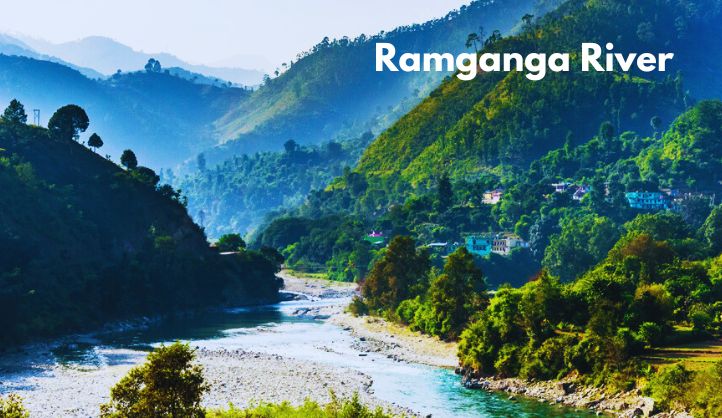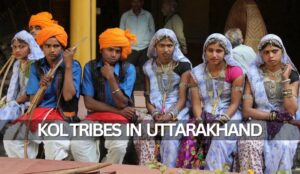Have you ever stood by a river, mesmerized by its flow and the life it supports? The Ramganga River in Uttarakhand is one such captivating waterway. Originating from the snow-capped peaks of the Himalayas, it travels through the enchanting landscapes of Uttarakhand, enriching both the environment and the people living along its banks.
Historical Significance
The Ramganga River has been a silent witness to the rise and fall of civilizations. Ancient settlements flourished along its banks, taking advantage of its fertile plains. The river’s name is derived from Lord Rama, one of the most revered deities in Hindu mythology, indicating its deep-rooted cultural significance.
The Legend of Lord Rama
According to legend, Lord Rama spent time near this river during his exile. This connection with the epic Ramayana has made the Ramganga River a sacred entity for many. Pilgrims and tourists alike visit the river to pay homage to its historical and spiritual importance.
Geography and Course
The Ramganga River originates from the Namik Glacier in the Pithoragarh district of Uttarakhand. It travels approximately 373 kilometers before merging with the Ganges. Its journey encompasses various terrains, from the lofty Himalayas to the lush plains, creating diverse ecosystems along the way.
Major Tributaries
Several tributaries, including the Eastern Ramganga and the Western Ramganga, feed the river. These tributaries enhance the river’s volume and contribute to its ecological diversity.
Ecological Importance
The Ramganga River is a lifeline for the flora and fauna of the region. Its waters sustain dense forests, grasslands, and wetlands, creating habitats for numerous species.
Wildlife Habitat
The river flows through the Jim Corbett National Park, one of India’s premier wildlife reserves. This park is home to the majestic Bengal tiger, Asian elephants, and a variety of bird species. The Ramganga River’s presence ensures a steady water supply, which is crucial for the survival of these animals.
Aquatic Life
The river supports a rich diversity of aquatic life, including several fish species. The presence of fish not only supports local fisheries but also attracts bird species that feed on them, maintaining a balanced ecosystem.
Cultural and Spiritual Relevance
For centuries, the Ramganga River has been an integral part of the cultural and spiritual life of the people of Uttarakhand. Festivals, rituals, and daily life revolve around its waters.
Local Festivals
One of the significant festivals associated with the river is Makar Sankranti, celebrated with great fervor. People take a holy dip in the river, believing it to cleanse their sins and bring prosperity.
Temples and Shrines
Numerous temples and shrines dot the river’s course. These religious sites attract pilgrims from all over the country, who come to seek blessings and perform rituals.
Adventure and Tourism
The Ramganga River offers a plethora of adventure activities, making it a popular destination for thrill-seekers and nature enthusiasts.
River Rafting and Kayaking
The river’s swift currents and challenging rapids provide an exhilarating experience for river rafting and kayaking enthusiasts. These activities are best enjoyed during the monsoon season when the water levels are high.
Fishing and Angling
For those who prefer a quieter adventure, fishing and angling in the Ramganga River can be a rewarding experience. The river is home to the prized Mahseer fish, attracting anglers from around the world.
Nature Walks and Bird Watching
The river’s banks are perfect for leisurely nature walks and bird watching. The diverse avian population, including species like the kingfisher, heron, and osprey, offers a delightful experience for bird watchers.
Conservation Efforts
Despite its ecological and cultural importance, the Ramganga River faces threats from pollution and unsustainable development. Efforts are being made to conserve and protect this vital waterway.
Community Initiatives
Local communities, along with environmental organizations, are actively involved in conservation efforts. Initiatives like river clean-up drives, awareness campaigns, and sustainable tourism practices are making a positive impact.
Government Policies
The government has also implemented policies aimed at preserving the river’s health. Strict regulations on industrial discharge and promoting eco-friendly practices are steps in the right direction.
Personal Experiences and Anecdotes
Every visit to the Ramganga River leaves an indelible mark on one’s soul. Here are a few personal anecdotes that highlight the river’s charm:
A Tranquil Evening by the River
One summer evening, I found myself sitting by the banks of the Ramganga River. The sun was setting, casting a golden hue on the water. The sound of the flowing river was like music to my ears, and I felt a deep sense of peace and connection with nature.
A Memorable Rafting Adventure
On another occasion, I joined a group of friends for a rafting expedition. The thrill of navigating the rapids, the spray of the cold water, and the camaraderie made it an unforgettable experience. The Ramganga River, with its unpredictable currents, provided the perfect backdrop for this adventure.
Nearby Places to Explore Along the Ramganga River
Exploring the vicinity of the Ramganga River offers a delightful blend of nature, history, and culture. Here are some must-visit places near the Ramganga River:
Jim Corbett National Park
- Wildlife Safaris experience the thrill of spotting Bengal tigers, elephants, leopards, and a variety of bird species in Jim Corbett National Park.
- Nature Walks enjoy guided walks through the lush forest, learning about the diverse flora and fauna.
- River Rafting takes on the adventurous rapids of the Ramganga River within the park.
Binsar Wildlife Sanctuary
- Panoramic Views witness breathtaking views of the snow-clad Himalayan peaks, including Nanda Devi, Trishul, and Panchachuli, in Binsar Wildlife Sanctuary.
- Rich Biodiversity to explore dense forests home to diverse wildlife, including leopards, barking deer, and over 200 bird species.
- Binsar Zero Point to reach the highest point in the sanctuary for a mesmerizing sunrise or sunset experience.
Ranikhet
- Chaubatia Garden stroll through beautiful orchards and gardens with a stunning backdrop of the Himalayas.
- Jhula Devi Temple is this ancient temple dedicated to Goddess Durga, known for its thousands of bells.
- Golf Course enjoy a game of golf at one of the highest and most picturesque golf courses in Asia.
Nainital
- Naini Lake takes a serene boat ride on the picturesque Naini Lake surrounded by hills.
- Naina Devi Temple visits this sacred temple dedicated to Goddess Naina Devi, located on the northern shore of Naini Lake.
- Snow View Point rides the cable car to Snow View Point for panoramic vistas of the snow-covered Himalayas.
Almora
- Kasar Devi Temple explores this ancient temple known for its spiritual aura and panoramic views.
- Bright End Corner enjoys breathtaking sunrise and sunset views from this scenic spot.
- Lakhudiyar Caves discover ancient rock paintings and carvings depicting human and animal figures.
Mukteshwar
- Mukteshwar Temple visits this 350-year-old temple dedicated to Lord Shiva, and offers stunning views of the surrounding valleys.
- Chauli Ki Jali is engaged in rock climbing and rappelling at this adventurous spot with spectacular views.
- Mukteshwar Inspection Bungalow stays at this charming British-era bungalow, known for its colonial architecture and serene surroundings.
Kausani
- Anashakti Ashram visited this peaceful ashram where Mahatma Gandhi stayed and wrote his commentary on the Anashakti Yoga.
- Tea Gardens explore the scenic tea gardens and learn about tea production.
- Baijnath Temple Discover this ancient temple complex along the Gomti River, known for its historical and architectural significance.
Jageshwar Dham
- Jageshwar Dham is an ancient temple exploring a group of over 100 ancient temples dedicated to Lord Shiva, dating back to the 9th century.
- Scenic Beauty enjoy the serene surroundings and lush deodar forests.
- Cultural Significance learn about the rich cultural and historical significance of this important pilgrimage site.
Bhimtal
- Bhimtal Lake to enjoy boating on this picturesque lake, larger and quieter than Naini Lake.
- Aquarium Island Cafe visits the unique island in the middle of the lake, housing an aquarium and a cafe.
- Hidimba Parvat takes a trek to this scenic hill named after Hidimba, a character from the Mahabharata, for panoramic views.
Conclusion
The Ramganga River is more than just a river; it is a testament to the beauty and resilience of nature. Its waters nourish life, support ecosystems, and inspire those who visit its banks. Whether you seek adventure, spiritual solace, or a connection with nature, the Ramganga River in Uttarakhand offers it all.
FAQs about Ramganga River
Where does the Ramganga River originate?
The Ramganga River originates from the Namik Glacier in the Pithoragarh district of Uttarakhand.
What is the historical significance of the Ramganga River?
The river is believed to be associated with Lord Rama from Hindu mythology, and ancient civilizations flourished along its banks.
Which wildlife reserve does the Ramganga River flow through?
The river flows through the Jim Corbett National Park, a renowned wildlife reserve in India.
What adventure activities can be enjoyed on the Ramganga River?
Popular activities include river rafting, kayaking, fishing, angling, and bird watching.
What are the major threats to the Ramganga River?
Pollution and unsustainable development are major threats, but conservation efforts are underway to protect the river.
How can tourists contribute to the conservation of the Ramganga River?
Tourists can participate in clean-up drives, follow eco-friendly practices, and spread awareness about the importance of the river’s conservation.





